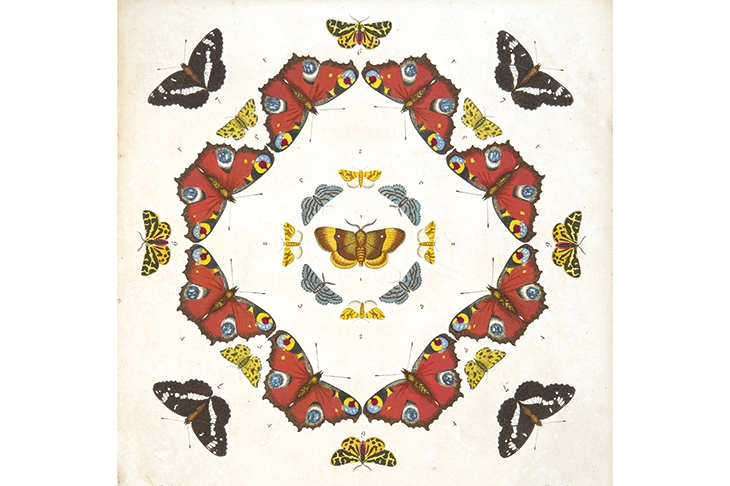In 1979, despite the best efforts of scientists for more than a century, a butterfly called the British Large Blue became extinct. There is widespread concern about the more recent decline in butterfly populations, but the American ecologist Nick Haddad writes that the collective weight of the known populations of the five rarest butterflies he discusses in his sobering book is just ‘three pounds five ounces — as much as one panda’s paw’. The special importance of butterflies, he argues, is that they provide lessons about the decline and management of other threatened species.
The fate of the British Large Blue shows how difficult it can be to conserve a creature that requires very specific conditions in order to survive: not only wild thyme, its main food source, but also colonies of a particular species of ant on which the caterpillars preyed and which itself favoured steep, south-facing slopes, and rabbits to keep the grasses to less than 2.1 inches high. Human encroachment and myxomatosis did their worst, and by the time scientists had worked out the butterfly’s reliance upon maintained habitat and species co-operation it was too late.
Among the butterflies Haddad discusses are the Bay Checkerspot, the Crystal Skipper and St Francis’s Satyr, names as lovely as the insects themselves. How butterflies and moths acquired such names is the subject of Peter Marren’s splendid and absorbing Emperors, Admirals and Chimney Sweepers. He provides an informative and nicely anecdotal history of naming, and then conducts the reader on an entertaining stroll through various categories of names, arranged alphabetically from Abundance (and scarcity) to the letters Y and Z (in the form of wing markings), taking time also to elucidate some of the scientific names alongside the English ones.
As Marren points out, the craze for lepidoptery began ‘not with science, but with art: with the admiration felt by water-colourists and pattern designers and amateur poets for these most beautiful of insects’; and it was enthusiastic collectors rather than ‘sober scientists’ who came up with such poetic and inventive English names. By the time Linnaeus began providing his Latinate binomials, many of these names — Hairstreak, Fritillary, Comma, Tortoiseshell, Painted Lady, Brimstone and Argus — were already in place.
The Georgian period saw the publication of lavishly illustrated albums of butterflies and moths, often depicted fluttering around plants and identified by newly-minted names. Among those introduced in Benjamin Wilkes’s The English Moths and Butterflies (1748) are the Puss Moth, the Buff-tip, the Kentish Glory and the Clifden Nonpareil, while Moses Harris’s The Aurelian (1766) gave us Skippers, the Speckled Wood, the Purple Emperor and the Camberwell Beauty.
Some of these names are engagingly of the period. Several collectors were connected with the design and manufacture of fabrics, and so moths were named the Pale-shouldered Brocade, the Silky Wave and the Satin Lutestring (probably a corruption of ‘lustring’, another fabric). A whole sub-family of moths are called footmen, because they rest with their wings tightly furled around their body, resembling servants standing stiffly to attention in Georgian households. Alongside the Muslin Footman, Rosy Footman, Red-necked Footman, Dingy Footman and so on we also find the Lackey (so called because the stripes on the caterpillar resemble those on servants’ livery) and the sooty-winged Chimney Sweeper. Similarly, moths with pale, grained wings owe their name to the pine panelling found in Georgian houses: Mere Wainscot, Obscure Wainscot, White-mantled Wainscot.
Names continue to be coined and argued over, and there is an amusing account of the much-derided attempts of an eccentric prep-school teacher called Ian Heslop (1904–70) to name all the micro-moths. Marren also supplies fascinating tables relating historical names to current ones and identifying first usage of the latter.
This is a marvellous book, beautifully illustrated, and as much about language as it is about lepidoptery. The names themselves provide poetry on every page.






Comments